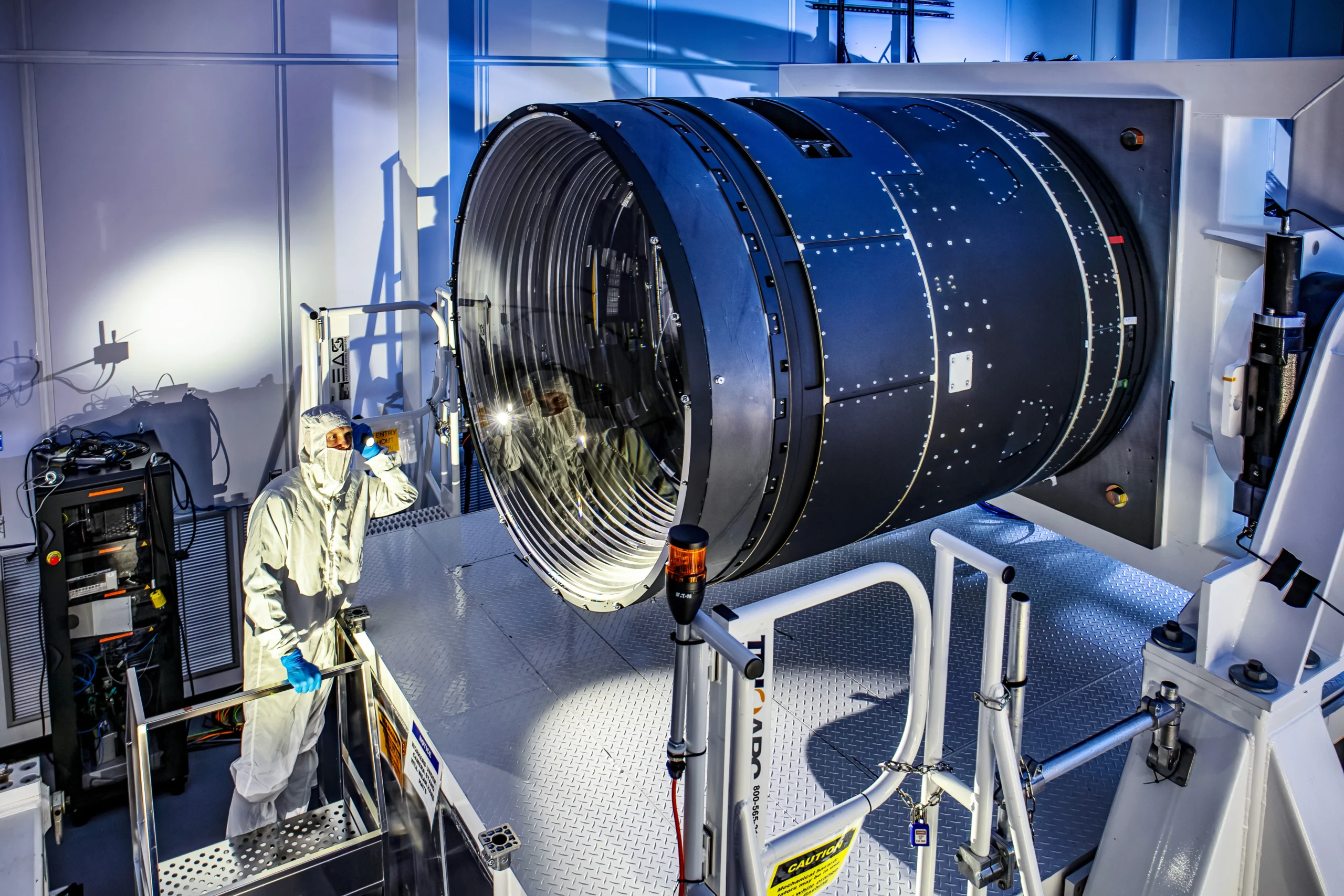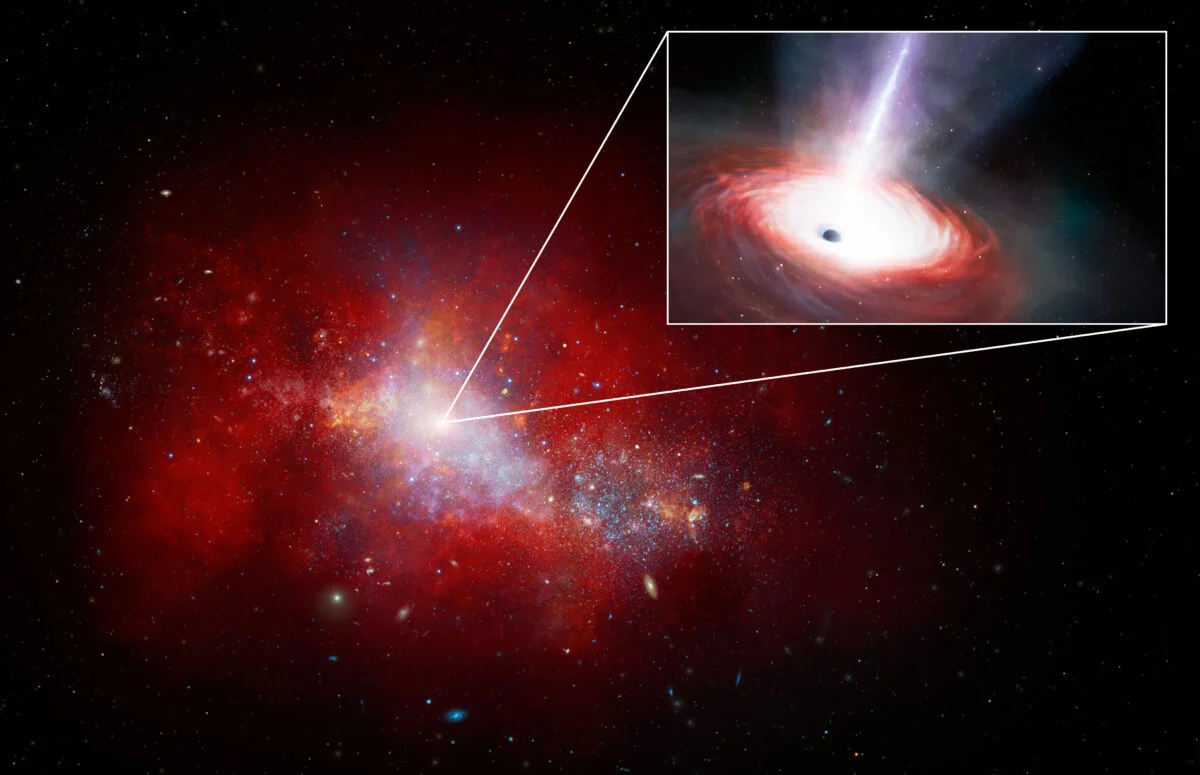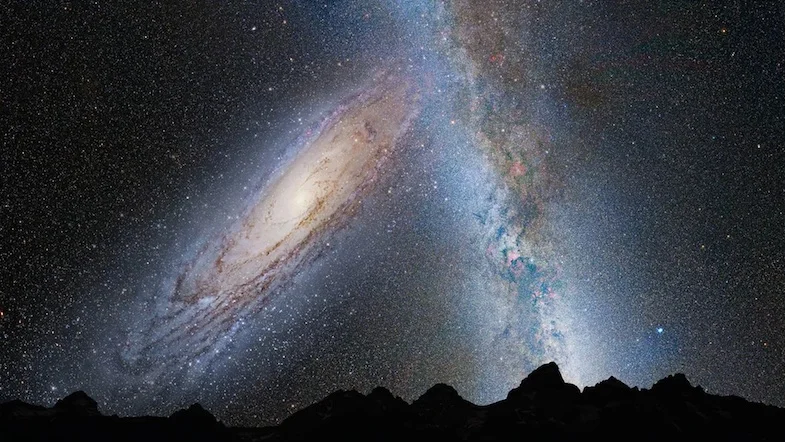
The Largest Digital Camera for Astronomy: A New Era of Cosmic Exploration
- Exotic objects
- August 20, 2024
- 614
The Legacy Survey of Space and Time (LSST) Camera, the largest digital camera ever constructed for astronomy, has been completed, marking a significant milestone in observational technology. This groundbreaking instrument will soon be installed on the Simonyi Survey Telescope at the Vera C. Rubin Observatory in Chile, where it will begin an ambitious 10-year mission to map the cosmos.
A Giant Among Cameras
Weighing a staggering 6,600 pounds (3,000 kilograms), the LSST Camera is comparable in size to a compact car. Its massive lens, standing 5 feet (1.5 meters) tall, sets it apart as a marvel of engineering. The camera boasts an extraordinary resolution of 3,200 megapixels, dwarfing the capabilities of standard digital cameras, which typically have around 48 megapixels.
The camera’s vast field of view can capture a section of the sky seven times wider than the full Moon, making it capable of resolving details as small as a golf ball from 15 miles (25 kilometers) away. To display one image at its full resolution, hundreds of high-definition screens would be required.
Revealing the Universe’s Mysteries
Once operational, the LSST Camera will conduct the most comprehensive survey of the night sky ever attempted. Its objectives include:
- Exploring dark matter and dark energy: By studying weak gravitational lensing—an effect where light from distant galaxies is bent by intervening mass—the camera will provide insights into how mass is distributed across the universe.
- Supernova and galaxy surveys: Tracking the evolution of the universe through time by observing large numbers of supernovae and galaxies.
- Solar system studies: Identifying asteroids, comets, and other objects within our solar system.
Kathy Turner, program manager for the Department of Energy’s Cosmic Frontier Program, emphasized the importance of this effort, stating, “Rubin Observatory will delve deeper than ever before into the cosmos and help answer some of the hardest, most important questions in physics today.”
Final Testing and Installation
Currently undergoing rigorous testing at the SLAC National Accelerator Laboratory in Menlo Park, California, the LSST Camera’s cutting-edge lenses and components are designed for precision and durability. Once testing is complete, the camera will be shipped to the Cerro Pachón site in the Andes Mountains, where it will be mounted on the Simonyi Telescope. Observations are expected to begin as early as 2025, heralding a new era in astronomical research.
A Bold Vision for the Future
The LSST Camera represents a technological leap in astronomy, promising to revolutionize our understanding of the universe. With its unprecedented ability to map the sky in detail, this powerful instrument will unlock answers to long-standing questions about the nature of the cosmos while discovering phenomena we have yet to imagine.



